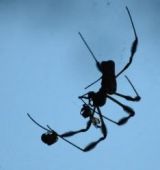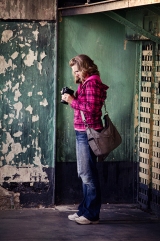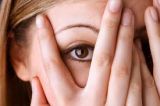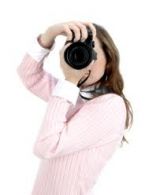- Forum
- Photography and Camera Forum
- Taking the Photo | Editing | The art of Photography!
- Beginner Photography Forum
- When are you using your 50mm lens?
When are you using your 50mm lens?
Post #234776
Is it because you haven't used it in a while so decide "what the heck, might as well get some use out of it". Or do you have a more technical reason for the need of the 50mm focal length?
Canon T3i, 18-55mm IS, 50mm, 55-250mm
-

- Dori
- Moderator
-
- Nikon D5000
- Followers: 167
- Posts: 7371
-
Points:
12
-

- Michelle Johnson
- Newbie
-
- Canon 7D
- Followers: 10
- Posts: 6
-
Points:
0
Post #234848
If you have it, take it seriously. It's a wonderful lens that's perfect for so many different situations.
-

- JoAnne Muzila
- Lone Wolf
-
- Nikon D80
- Followers: 21
- Posts: 124
-
Points:
0
Post #234937
-

- Darrell
- Apprentice
-
- Nikon D7000 & D70
- Followers: 27
- Posts: 2059
-
Points:
0
-

- gadam777
- Newbie
-
- Canon 550D
- Followers: 4
- Posts: 10
-
Points:
0
Post #234952
Adam
-

- Henry Peach
- Apprentice
-
- I currently use a 5DII or Sony Nex-3 most of the time.
- Followers: 50
- Posts: 2925
-
Points:
16
Post #235250
50mm lenses are ubiquitous because it provides a field of view on 35mm format that's between wide and tight, and it's particularly easy and cheap to make high image quality lenses at this focal length. In the past zoom lenses weren't much of an option because of quality and cost. 50mm was a good all around lens choice, and it was fairly inexpensive. So it became the default kit lens before zooms. Every manufacturer has an inexpensive 50mm lens in their lineup.
Now we have quality zooms, and they are cheap to make, so they have become the default. The problem is that fast zooms are still expensive, and even the common 50mm is a stop plus faster than the fanciest zooms. It doesn't take up much room in the bag, it's cheap, so why not?
I use mine when I need more speed than f/2.8 or want to carry a smaller camera. That's fairly often for me, so I get a lot of use out of my 50mm. If I was using APS-C I'd want 28mm or 35mm instead. I prefer the 85mm for portraits on APS-C and 35mm format.
Starting with a longer than normal lens (50mm on APS-C, 85mm on 35mm) might be a pretty good idea for beginners. They are often told to "get closer."
-

- Camera Diva
- Photography Hooked
-
- Canon EOS-5D Mark II
- Followers: 215
- Posts: 921
-
Points:
5081
Post #235568
At the beginning of time there was absolutely nothing. And then it exploded! - Terry Pratchett
-

- gadam777
- Newbie
-
- Canon 550D
- Followers: 4
- Posts: 10
-
Points:
0
Post #235635
Adam
-

- Henry Peach
- Apprentice
-
- I currently use a 5DII or Sony Nex-3 most of the time.
- Followers: 50
- Posts: 2925
-
Points:
16
Post #235645
gadam777 wrote: It is true, I did not specify the format of the camera. I took it natural, that everyone uses APS-C, so the focal length changes to approx 80mm with a 50mm lens.
So human vision is like an 80mm lens?
A normal lens is one where the focal length approximately equals the distance measured from corner to corner diagonally across the sensor or film or plate. It is often described as one that has a field of view that seems natural to human viewers. A normal lens (50mm on 35, 30mm on APS-C) has a field of view of approximately 40 degrees horizontally. Human vision has a field of view of 120 (conservative estimate) degrees horizontally.
In the past the majority of photographers were shooting with lenses that were normal for the format, and people may have gotten used to thinking that a 40 degree field of view is normal for photographs, but the way human vision works I think human vision is more like a zoom lens. Even though the eye remains the same, our mind can completely ignore what's in the periphery of our vision, and sort of zoom in on the parts that we are concentrating on. 40 degree would be the center 1/3rd of our field of view, and that may well be a decent estimate as to what many of us are commonly concentrating on, but it's obvious that we can go wider and tighter as well. Looking into someone's eyes we zoom in tight (portraits). Surveying a scene we go wider (landscapes, street). In the age of zoom lenses I think we are re-training ourselves as to what we perceive as normal. Once upon a time 28mm on a 35mm camera was considered extremely wide. These days it's just wide. I think today most folks would perceive photos taken with 35mm (maybe even wider) to 70mm (on 35mm format) quite normal looking. It just depends on the subject, and how we are used to viewing those subjects with our vision.
-

- gadam777
- Newbie
-
- Canon 550D
- Followers: 4
- Posts: 10
-
Points:
0
Post #235712
Henry Peach wrote:
So human vision is like an 80mm lens?gadam777 wrote: It is true, I did not specify the format of the camera. I took it natural, that everyone uses APS-C, so the focal length changes to approx 80mm with a 50mm lens.
Exactly!
Adam
- Forum
- Photography and Camera Forum
- Taking the Photo | Editing | The art of Photography!
- Beginner Photography Forum
- When are you using your 50mm lens?
Latest Reviews
The Canon EOS R100 is an entry-level mirrorless camera introduced in 2023. But just because it’s an entry-level camera doesn’t mean it’s a bare-bones camera. Find out why in this review!
Nikon’s retro-looking Nikon Zfc is anything but retro. Under its classic body is a host of features and amenities that make it a worthwhile compact mirrorless camera for 2024.
The Canon EOS R50 is one of the newest R-system cameras from Canon. Is it worth your money? Find out all the details you need to know in this comprehensive review.
The Sony FE 70-200mm f/2.8 GM OSS II is Sony’s flagship mirrorless zoom lens. As such, it’s loaded with features and has a top-shelf build quality that makes it a top pick!
Latest Articles
Using leading lines in photography helps improve the composition by drawing viewers in and leading their eye from the foreground to the background. Explore some fine examples of this in this guide!
The Insta360 has one of the best lineups of action cams and 360-degree cameras. With these Insta360 accessories, you can elevate your photography and videography game!
Creating impactful photos of landscapes depends on many factors, not the least of which is your talent behind the lens. This guide explores other elements required for the best product.
The Canon EOS R100 is an entry-level mirrorless camera introduced in 2023. But just because it’s an entry-level camera doesn’t mean it’s a bare-bones camera. Find out why in this review!
Are you ready to upgrade your camera? Before buying new, you might consider the value of purchasing used gear to save money.
The Olympus OM-D E-M10 Mark IV is a micro four thirds camera released in 2020. It’s an entry-level system along with the OM-D E-M5 Mark III. Use this guide to determine which one is best for you!
Blue hour photography might not be as well known as golden hour photography, but it is every bit as good a time to create epic images of landscapes. Learn how in this quick tutorial!
Nikon’s retro-looking Nikon Zfc is anything but retro. Under its classic body is a host of features and amenities that make it a worthwhile compact mirrorless camera for 2024.
















